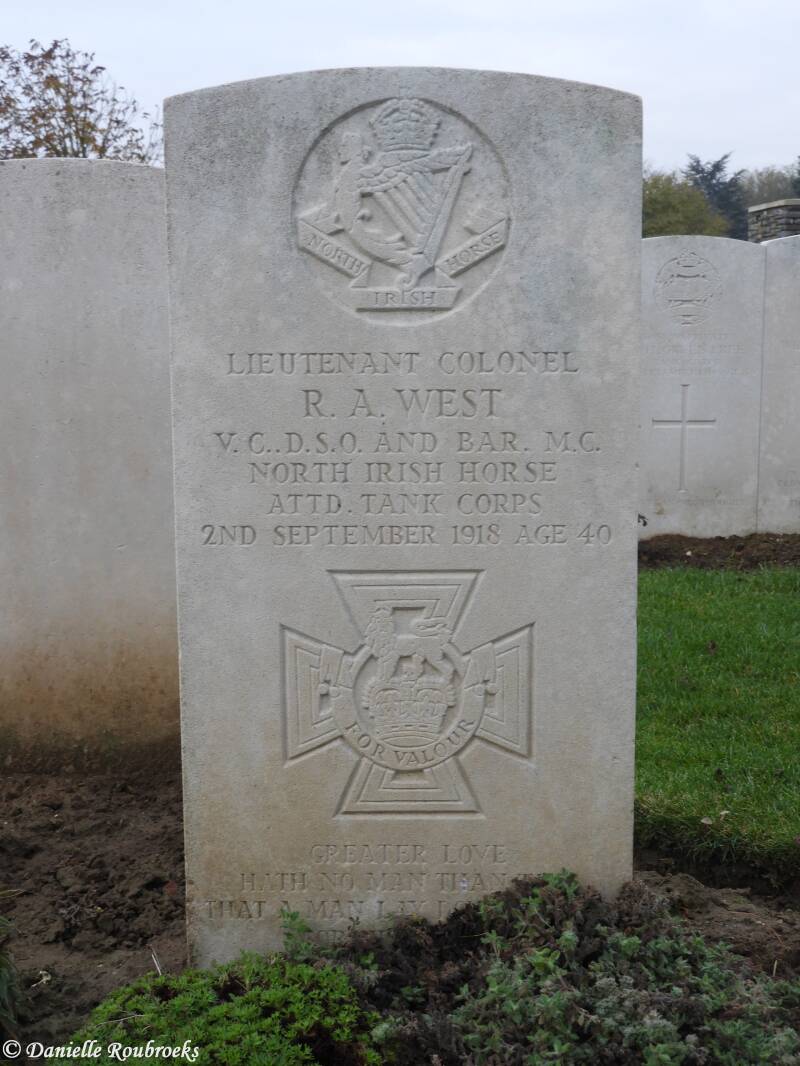Mory Abbey Military Cemetery, Mory
Historical Information (Source: CWGC)
Mory village was occupied by Commonwealth troops in the middle of March 1917. It was lost after obstinate defence by the 40th and 34th Division a year later and recaptured towards the end of the following August, after severe fighting, by the 62nd (West Riding) and Guard Divisions. The German burials in a plot on the west side of the cemetery were made by German troops in March-August 1918, or by Commonwealth troops in September 1918. The Commonwealth plots were begun at the end of March 1917 and carried on by fighting units until March 1918, and again in August and September 1918, as far as and including Plot III. The graves in Plots IV and V - including many of the Guards Division, and chiefly of 1918 - were added after the Armistice from the battlefields between St. Leger and Bapaume. They also included concentrations from smaller cemeteries.
Mory Abbey Military Cemetery contains 619 Commonwealth burials of the First World War. 101 of the burials are unidentified, but there is a special memorial to one casualty known to be buried among them. The cemetery also contains 230 German burials.
Served with
- United Kingdom (516)
- German (203)
- Australian (1)
- New Zealand (1)
Served in
- Army (711)
- Air Force (10)
VICTORIA CROSS
Lieutenant Colonel Richard Annesley WEST - North Irish Horse / Cdg. 6th Bn. Tank Corps
Died 02 September 1918 Age 40
Country of Service: United Kingdom
Awards: Victoria Cross, Distinguished Service Order and Bar, Military Cross, Twice Mentioned in Despatches
Citation
An extract from the Second Supplement to "The London Gazette", No. 30982, dated 29th Oct., 1918, records the following:-"For most conspicuous bravery, leadership and self-sacrifice. During an attack, the infantry having lost their bearings in the dense fog, this officer at once collected and re-organised any men he could find and led them to their objective in face of heavy machine-gun fire. Throughout the whole action he displayed the most utter disregard of danger, and the capture of the objective was in a great part due to his initiative and gallantry."
Grave Reference: III. G. 4.
(Source: Wikipedia)































